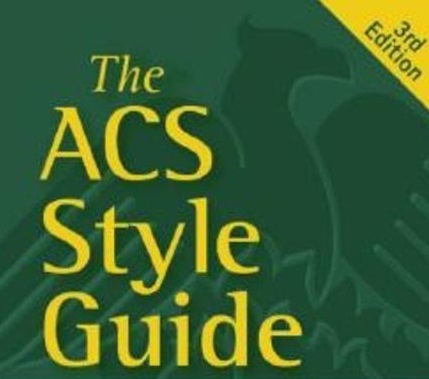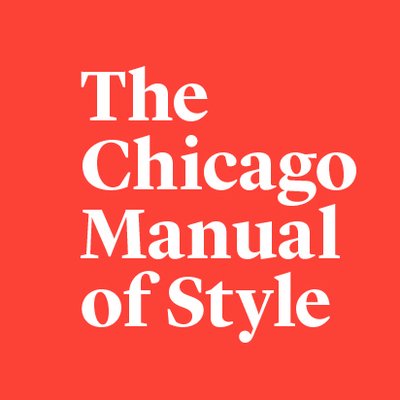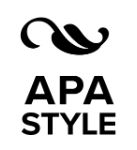MLA 스타일(MLA style)은 Modern Language Association에서 정한 문헌 작성 양식이다
1977년 초판 출간 후 여러 차례 개정을 거쳐, 2016년에 8번째 판이 출판되었으며 전 세계적으로 널리 사용되는 인용 스타일 중 하나이며 인문학 분야(특히 언어학, 문학 등)에서 자주 활용되고 있다.
기본 규칙
- MLA 스타일은 내주(본문 내 간단 표기) – 참고문헌(상세 표기) 방식을 사용한다
- 본문에서 간략히 (저자명 페이지) 형태로 표시하고, 문헌의 완전한 정보는 참고문헌에서 찾는 방식이다
- 영문 저자명은 본문에서는 성(Last Name)만 기재한다.
- 본문에 인용한 부분을 표시할 때는 참고문헌 목록을 정확히 가리켜야 한다.
- 본문에서는 “(저자명 페이지)” 형태로 저자명과 페이지 번호를 함께 표기한다.
- 2차 문헌(재인용)은 권장하지 않으나 불가피할 경우 “qtd. in”(영어) 또는 “재인용”(한국어)로 표기한다.
- 참고문헌에서는 저자, 표제, 출판사, 출판연도 등 요소를 순서대로 작성한다
- 영어의 경우 참고문헌에서는 성(Last Name, Surname), 이름(First Name, Given Name), 중간이름(Middle Name) 순서로 표기한다.
- 한국어의 경우 참고문헌에서는 성, 이름 순서로 표기한다.
- 일반적인 경우 표제는 이탤릭체로 표기한다.
- 표제는 타이틀 페이지에 나타난 대로 표기한다.
Tip> 본문에 표기하는 방식을 내주(In-text Citation), 페이지 하단에 표기하는 방식을 각주(Footnote), 논문의 끝부분에 표기하는 방식을 미주(Endnote)라고 한다.
본문에서 작성 예시
- ~에 의하면… (John 100).
- ~에 의하면… (한강 100).
- (qtd. in John 100)
- (한강 100 재인용)
- (Hemingway and Rolling 20)
- (정해연, 조영주 35)
- (Hemingway et al. 45)
- (한강 외 100)
참고문헌에서 작성 예시
- Hemingway, Ernest Miller. The Old Man and the Sea. Charles Scribner’s Sons, 1952.
- 김영하. 나는 나를 파괴할 권리가 있다. 문학동네, 1996.
참고문헌에서 저자가 두 명일 때(영어의 경우)
- 저자가 두 명일 때 타이틀 페이지에 표기된 순서대로 저자를 나열한다.
- 첫번째 저자는 성, 이름, 중간이름 순서로 표기한다.
- 두번째 저자는 이름, 중간이름, 성 순서로 표기한다.
- 저자를 나열할 때 사이에 ‘and‘를 표기한다.
참고문헌에서 저자가 두 명일 때(한국어의 경우)
- 저자가 두 명일 때 타이틀 페이지에 표기된 순서대로 저자를 나열한다.
- 모든 저자는 성, 이름 순서로 표기합니다.
- 저자를 나열할 때 사이에 ‘쉼표‘를 표기합니다.
참고문헌에서 저자가 두 명일 때(영어) 작성 예시
- Hemingway, Ernest Miller and Joanna Rolling. The Old Man and the Sea. Charles Scribner’s Sons, 1952.
참고문헌에서 저자가 두 명일 때(한국어) 작성 예시
- 김영하, 김철수. 나는 나를 파괴할 권리가 있다. 문학동네, 1996.
참고문헌에서 저자가 세 명 이상일 때(영어의 경우)
- 첫번째 저자만 표시.
- 첫번째 저자는 성, 이름, 중간이름 순서로 표기한다.
- 첫번째 저자를 표기한 다음 ‘el al.‘을 표기한다.
참고문헌에서 저자가 세 명 이상일 때(한국어의 경우)
- 첫번째 저자만 표시.
- 성, 이름 순서로 표기한다.
- 첫번째 저자를 표기한 다음 ‘외‘을 표기한다.
참고문헌에서 저자가 세 명 이상일 때(영어) 작성 예시
- Hemingway, Ernest Miler et al. The Old Man and the Sea. Charles Scribner’s Sons, 1952.
참고문헌에서 저자가 세 명 이상일 때(한국어) 작성 예시
- 김영하 외. 나는 나를 파괴할 권리가 있다. 문학동네, 1996.
단행본
단행본은 책 제목을 이탤릭체로 작성하며 참고문헌에서 작성 순서는 “저자. 제목. 출판사, 연도.” 순으로 작성한다
- 단독 저자: 영어는 “성, 이름.” / 한국어는 “성이름.”
- 두 명: 영어는 “성, 이름 and 이름 성.” / 한국어는 “성이름, 성이름.”
- 세 명 이상: 영어는 “첫 저자, et al.” / 한국어는 “첫 저자 외.”
- MLA에서는 표제를 이탤릭체로 작성
- 예: The Old Man and the Sea, 나는 나를 파괴할 권리가 있다
단행본의 일부(챕터 등)
- 책의 일부(챕터나 특정 글)의 저자를 먼저 표기.
- 만약 책에서 특정 저자의 글만 인용한다면 “저자. ‘챕터 제목.’ 책 제목, 출판사, 출판연도.” 형태로 쓸 수 있음.
- 책의 부분/챕터 제목은 큰따옴표(“ ”)로 표기
- “Map of Cuba,” “마라의 죽음” 등
연속간행물(저널, 학술대회논문집 등)
- 학술지, 저널 등 연속간행물에 등재된 논문의 표기 방법으로 간행물명은 이탤릭체로 작성한다.
- 형식은 저자. “표제”. 정기간행물명, vol.##, no.##, 출판연도, PP-PP
학위논문
- 형식은 저자. 표제, 출판연도. 대학명, 학위명. 기재한다.
- 논문의 표제는 이텔릭체로 표기한다.
- 대학명은 대학교의 이름을 먼저 기재하고 다음으로 학위 과정을 기재한다.
보고서
- 영어 형식은 저자. 표제. 출판사, 출판연도. report num.: 보고서 번호 표기한다
- 한국어 형식은 저자. 표제. 출판사, 출판연도. 보고서 번호: 보고서 번호 표기한다
- 표제는 이텔릭체로 표기한다.
생성형AI, ChatGPT
MLA는 아직 ChatGPT 등 생성형 AI 인용 형식을 확립하지 않았으며 기관, 교수별 가이드를 우선 적용하며 사용해야 한다.
- 프롬프트 텍스트에 질문한 내용을 쌍따옴표를 사용하여 입력하고, 이어서 프롬프트를 기재한다.
- 제목에는 ChatGPT와 버전을 기재한다.
- 기관명에는 OpenAI를 입력하고, 이어서 질문 생성 날짜를 작성한다.
- Chat GPT의 URL을 http://는 제외하고 작성합니다.
- 형식 영어: “Text of prompt” prompt. Title, Version, Institution Name, Day of prompt, URL.
- 형식 한국어: “프롬프트 텍스트” 프롬프트. 제목, 버전, 기관명, 질문 생성 날짜, URL.





